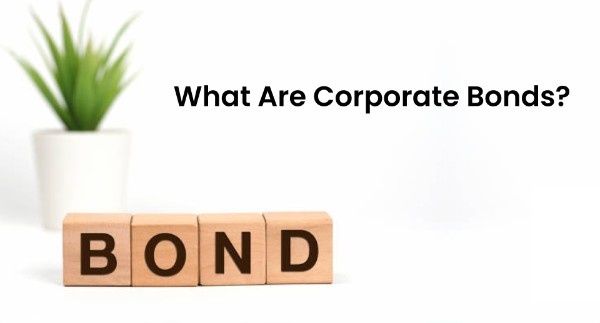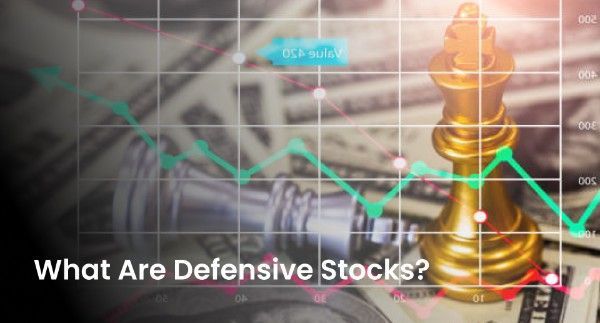What are Corporate Bonds?

Corporate bonds are debt instruments issued by companies to raise funds from the public. The funds that they raise from the issue of these debt instruments are used for various purposes, such as financing new projects, expanding the existing business, or paying off existing debt obligations.
When you purchase corporate bonds, you lend money to the company. In exchange for borrowing money from you, the issuing company promises to make periodic interest payments at a certain percentage for a predetermined tenure. At the end of the tenure, the issuing company repays the principal amount you invested.
Features of Corporate Bonds
Corporate bonds have several key features that set them apart from other financial instruments. Here is a closer look at some of their unique characteristics.
Stable Interest Payments
Corporate bonds offer passive income in the form of periodic interest payments till the time they mature. Conservative investors looking for a regular income source can invest in corporate bonds.
Lower Risk
One of the major features of corporate bonds is that they have lower risk compared to equity stocks. This is especially true in the case of corporate bonds with high credit ratings. By including these securities, investors can reduce the overall risk of their investment portfolio.
Better Returns
Corporate bond interest rates are often higher compared to government securities and other traditional investment options like bank deposits. By investing in these debt securities, investors can generate significantly better returns.
Flexibility
Corporate bonds enjoy a high degree of flexibility in terms of the maturity period. The issuing company is free to offer bonds with almost any tenure ranging from 5 years to 10 years and beyond. Additionally, these bonds are often listed on the exchanges, enabling investors to freely sell them on the open corporate bond market even before the maturity date.
Types of Corporate Bonds
Corporate bonds come in various forms, with each one catering to different investor preferences and issuer needs. Here is a quick overview of some of the most popular corporate bond types.
Secured Bonds
Secured bonds are backed by specific assets of the issuing company and provide additional security to investors. In the case of default, the pledged assets will be liquidated to repay the bondholders.
Unsecured Bonds
Unsecured bonds do not have any asset backing and rely entirely on the issuing company’s creditworthiness and its ability to generate cash flows. These debt instruments are riskier compared to secured bonds.
Callable Bonds
As you have already seen, callable bonds are those that can be redeemed by the company even before its actual maturity date.
Convertible Bonds
Convertible bonds are one of the more popular corporate bond types. These bonds are converted into regular equity stocks at a predetermined conversion rate on maturity.
Zero-Coupon Bonds
Instead of providing periodic interest payments, zero-coupon bonds are sold to investors at a price lower than their face value. On maturity, however, the bonds are redeemed at face value. The difference between the selling price and the face value represents the return.
Investment Grade Bonds
Investment-grade bonds are those that are issued by companies with high credit ratings. These bonds are considered safer since the issuing companies have good creditworthiness and are financially stable.
High-Yield Bonds
Also known as junk bonds, high-yield bonds are issued by companies with low credit ratings. These have a higher risk of default and offer high corporate bond interest rates to compensate for the increased risk.
Difference Between Corporate Bonds, Stocks, and Government Securities
As an investor, you must understand the difference between corporate bonds, stocks, and government securities. Here is a quick overview highlighting the key differences between these three investment options.
Risk and Return
Corporate bonds are less risky compared to stocks but offer lower returns. Stocks are the riskiest of the three investment options but provide the highest returns. Government securities, meanwhile, are considered the safest but offer the lowest yields.
Ownership and Income
Bondholders are creditors of the company and receive fixed interest payments. Stockholders are partial owners and may receive dividends, which are not guaranteed. Government security holders also receive periodic interest payments, which are fully guaranteed by the government.
Volatility
Stock prices tend to be very volatile compared to bond prices. Although considered to be stable, prices of corporate bonds can fluctuate based on interest rates and the issuer's financial health. Government securities are highly stable and have the least price volatility among the three.
Claim on Assets
In the case of bankruptcy, corporate bondholders hold higher priority over equity stockholders in claims on company assets. When the issuing company’s assets are liquidated, bondholders are paid first, followed by equity stockholders. Government security holders, meanwhile, have the highest level of protection since they have a sovereign guarantee.
Voting Rights
Equity stockholders get the right to vote on company matters at general meetings. Corporate bondholders and investors in government securities do not get any voting rights whatsoever.
Also Read: Bond Investing Basics: What are Bonds, Their Main Types and Key Terms to Know?
Conclusion
Corporate bonds are a lucrative investment option that can provide stable returns and lower the overall portfolio risk. However, they are not without their risks. As an investor, it is crucial to thoroughly examine the various risks before investing in these debt instruments.
Investing in corporate bonds is a good way to diversify your portfolio. However, if you are interested in long-term wealth creation, stock investments are something you must focus on. That said, not all stocks may deliver the returns that you expect. Therefore, choosing the right stock becomes important.
Research 360, powered by Motilal Oswal, is a powerful stock analysis platform that can help you identify fundamentally strong companies with good growth potential. On the platform, you get access to features like stock screeners, sector-wise and industry-wise analysis, and the latest market-related news and announcements. Go ahead and try the different features today and transform the way you invest.

















